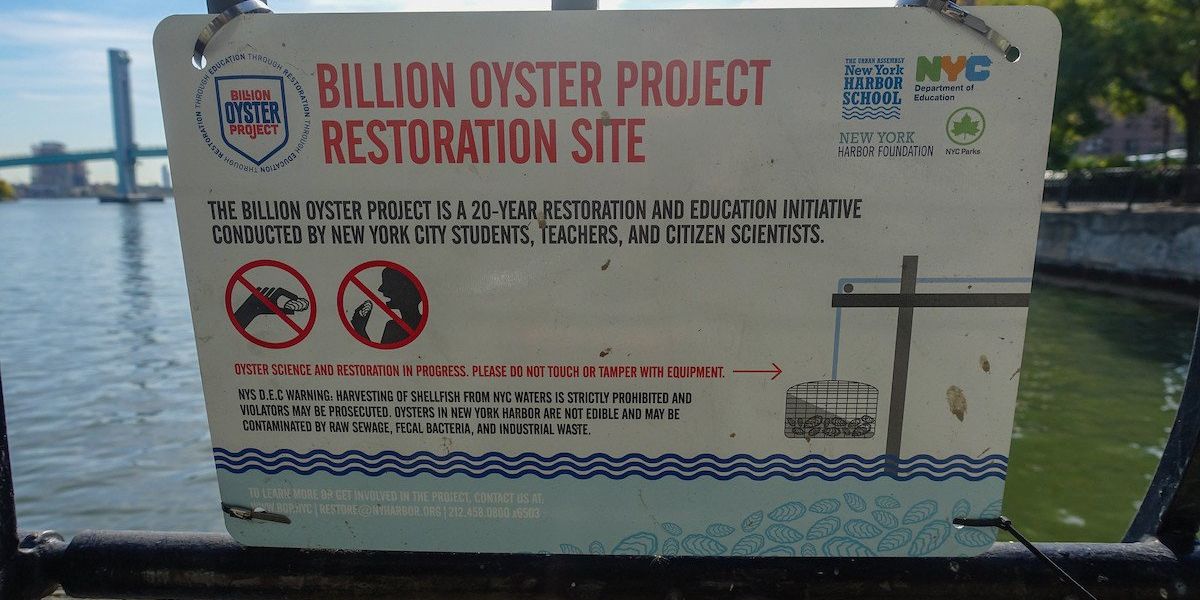
New York’s oyster revival aims to reconnect residents with their city’s watery heritage
New York's Billion Oyster Project, which has planted millions of oyster larvae in the harbor over the past decade, is bringing back the city’s long-lost bivalves, while inspiring a new generation to engage with their environment.
Anna Bressanin reports for the BBC.
In short:
- The Billion Oyster Project, started as a student experiment, has now planted 150 million larvae to revive New York’s oyster population, once among the world’s largest.
- Restoration efforts face challenges, including siltation and low larval density, but oysters are gradually returning to the harbor, filtering water and supporting other marine species.
- The project emphasizes reconnecting New Yorkers with their environment, with activities like oyster shell recycling and school partnerships encouraging hands-on ecological awareness.
Key quote:
"Some years can be more [environmentally] stressful than others, but the survival rate is pretty good."
— Matt Hare, associate professor in natural resources and the environment at Cornell University.
Why this matters:
Beyond reviving a lost ecosystem, the project is reconnecting New Yorkers with their harbor’s natural history. Through oyster shell recycling, educational partnerships, and community engagement, it’s teaching locals to care about the harbor's health—something once taken for granted but now becoming a point of pride. Read more: We must adapt to climate change. Can we do it in ways that solve other problems too?














